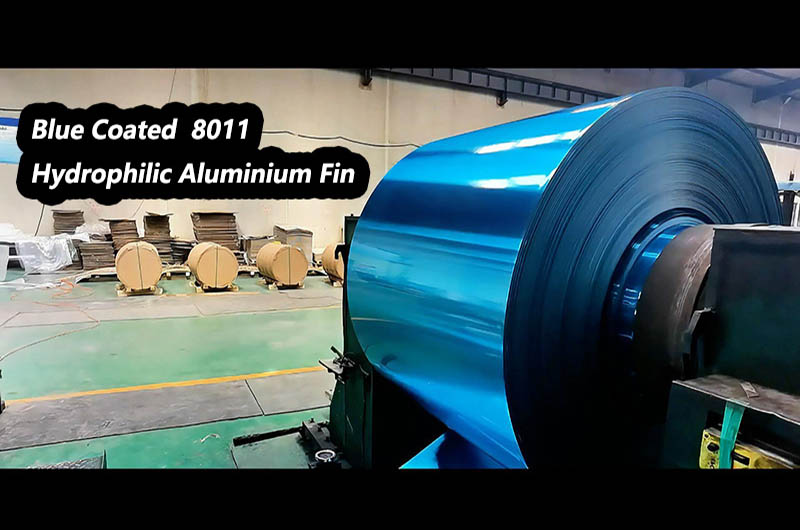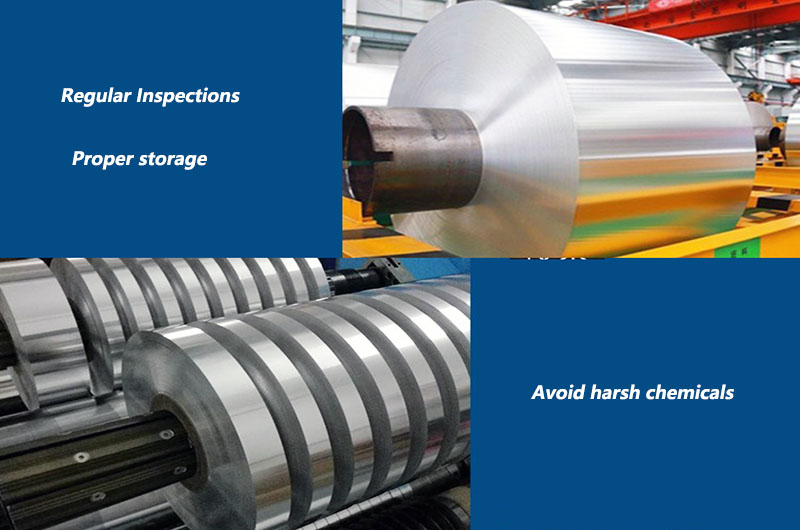- Problem 1: Aging and oxidation of hydrophilic membrane
- Problem 2: Condensation Formation and Clogging
Common problems encountered when using hydrophilic aluminum foil
- 1. The hydrophilic membrane will age and oxidize over time, and its hydrophilic performance will significantly decline.
- 2. Condensation water is generated during the refrigeration process, forming a water bridge between the aluminum foil fins, blocking the circulation air duct, and causing the cooling effect to decline year by year.
Common problems encountered when using hydrophilic aluminum foil can be solved through various preventive measures and maintenance practices. Here's details on how to resolve these issues:

Problem 1: Aging and oxidation of hydrophilic membrane
solution:
- Regular Inspections: Check hydrophilic aluminum foil regularly for signs of aging or oxidation. Visual inspection can help identify any deterioration in the hydrophilic coating.
- Proper storage: Store hydrophilic aluminum foil in a cool, dry place away from direct sunlight to minimize the impact of environmental factors on aging.
- Avoid harsh chemicals: Avoid using harsh cleaners or chemicals that speed up the aging process. If cleaning is required, use a mild detergent.
- Follow Manufacturer Guidelines: Follow the manufacturer’s cleaning and maintenance guidelines to ensure the longevity of your hydrophilic coating.
Problem 2: Condensation Formation and Clogging
solution:
- Proper design: Ensure the heat exchanger system is designed correctly to minimize the risk of water bridges forming. Proper drainage and airflow design help prevent standing water.
- Scheduled Maintenance: Implement a scheduled maintenance schedule to clean and inspect the heat exchanger system. Remove any debris, dust or contaminants that may cause blockage.
- Use an anti-corrosion coating: Apply an anti-corrosion coating to the aluminum fins to reduce the possibility of oxidation and enhance the durability of the hydrophilic coating.
- Improve ventilation: Increase system ventilation to reduce humidity and the potential for water condensation.
- Install drain pans: Install drain pans strategically to collect condensation and drain it away from your air ducts, preventing clogs.
- Consider a hydrophobic coating: In some cases, a hydrophobic coating may be considered to repel water and reduce the potential for water bridges to form between the fins.
- Monitor performance: Regularly monitor the performance of your cooling system and address any degradation promptly. This may involve adjusting settings or seeking professional maintenance.
- By implementing these solutions, you can alleviate common problems associated with hydrophilic aluminum foil, ensuring optimal performance and extending the life of your equipment.

The use of hydrophilic aluminum foil in HVAC (heating, ventilation and air conditioning) systems has become standard practice due to its ability to increase heat exchange efficiency. However, like any technology, hydrophilic aluminum foils come with their own set of challenges that can impact their performance over time.
While hydrophilic aluminum foil brings significant advantages to HVAC systems, addressing the challenges associated with aging, oxidation and condensation is critical to maintaining optimal performance. By taking a proactive approach to maintenance, leveraging advanced technology, and considering sustainable practices, HVAC professionals and end users alike can ensure the longevity and efficiency of their systems.
Informations you may be interested in:
- Which is better, hydrophilic aluminum foil or copper foil for air conditioners
- Hydrophilic aluminum foil vs non-hydrophilic aluminum foil
- What is Hydrophilic Aluminum Foil?
- Hydrophilic aluminum foil performance indicators
- What components in air conditioning systems use aluminum foil?
- How is aluminum foil used for thermal insulation in air conditioning systems?
- Can aluminum foil be used in outdoor air conditioning units?
- Comprehensive analysis of air conditioning aluminum foil: classification and applications
- What kind of material is air conditioning aluminum foil made of and what are its
- 1050 Versatility in Air Conditioner Aluminum Foil Applications


